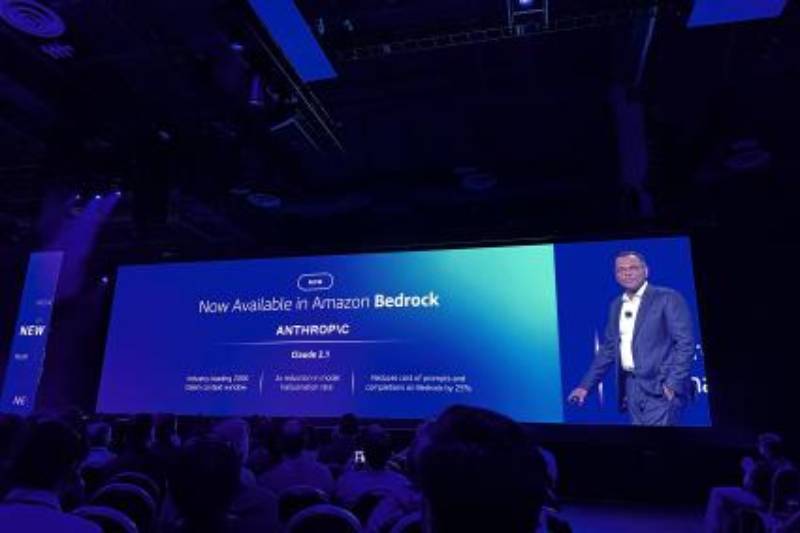Amazon has released its Titan text-to-image AI model, entering the field of artificial intelligence image generation. Titan Image Generator, which was unveiled at the AWS re:Invent conference, is said to have built-in safeguards against bias and toxicity and be able to produce “realistic, studio-quality images.” Titan is a tool that developers can use to create their own image generators powered by the model; to use it, developers must have access to Amazon Bedrock. It is not a stand-alone app or website.
During his keynote, AWS vice president of database, analytics, and machine learning Swami Sivasubramanian gave a preview of Titan Image Generator, highlighting the model’s capacity to alter backgrounds in addition to producing images in response to natural language prompts. Unlike well-known current image generators like OpenAI’s DALL-E, which are more consumer-oriented, it is directly targeted at an enterprise audience.
What Amazon describes as invisible watermarks will be automatically added to every image created with Titan Image Generator. According to Vasi Philomin, vice president of generative AI at AWS, this is a voluntary agreement that Amazon and the White House signed in July.
“We wanted a way to mark an image as created with AI, and specifically made with Titan Image Generator that will not interfere with the visual, have no latency, and cannot be cropped or compressed out,” Philomin said in an interview.
He also mentioned that the watermark is not limited to the file’s metadata.
One of the main components of the Biden administration’s executive order on AI is watermarking, or designating content as being created by AI. Companies like Adobe and Microsoft implemented the Content Credentials system, created by the Coalition for Content Provenance and Authenticity (C2PA), as a solution to this issue. Adobe goes one step further and creates an icon.
One of the main components of the Biden administration’s executive order on AI is watermarking, or designating content as being created by AI. Companies like Adobe and Microsoft implemented the Content Credentials system, created by the Coalition for Content Provenance and Authenticity (C2PA), as a solution to this issue. By creating an icon to indicate content credentials in image and video content, Adobe goes one step further.
Additionally, Sivasubramanian announced the general release of two more Titan models: Text Express, intended for larger applications like conversational chat apps, and Titan Text Lite, a smaller model for lighter text generation tasks like copywriting.
Additionally, customers who utilize Amazon’s Titan foundation models—including text-to-image—will be granted copyright indemnity. Additionally, it will offer users of any AI application developed by Amazon legal protection, even if the app makes use of a foundation model from its Bedrock AI model repository that is different, such as Claude 2 or Meta’s Llama 2. AWS HealthScribe, CodeWhisperer, Amazon Personalize, Amazon Lex, and Amazon Connect Contact Lens are a few of these apps.


 Entertainment2 weeks ago
Entertainment2 weeks ago
 Entertainment2 weeks ago
Entertainment2 weeks ago
 Entertainment3 weeks ago
Entertainment3 weeks ago
 Entertainment2 weeks ago
Entertainment2 weeks ago
 Entertainment2 weeks ago
Entertainment2 weeks ago
 Entertainment2 weeks ago
Entertainment2 weeks ago
 Entertainment3 weeks ago
Entertainment3 weeks ago
 Entertainment2 weeks ago
Entertainment2 weeks ago








